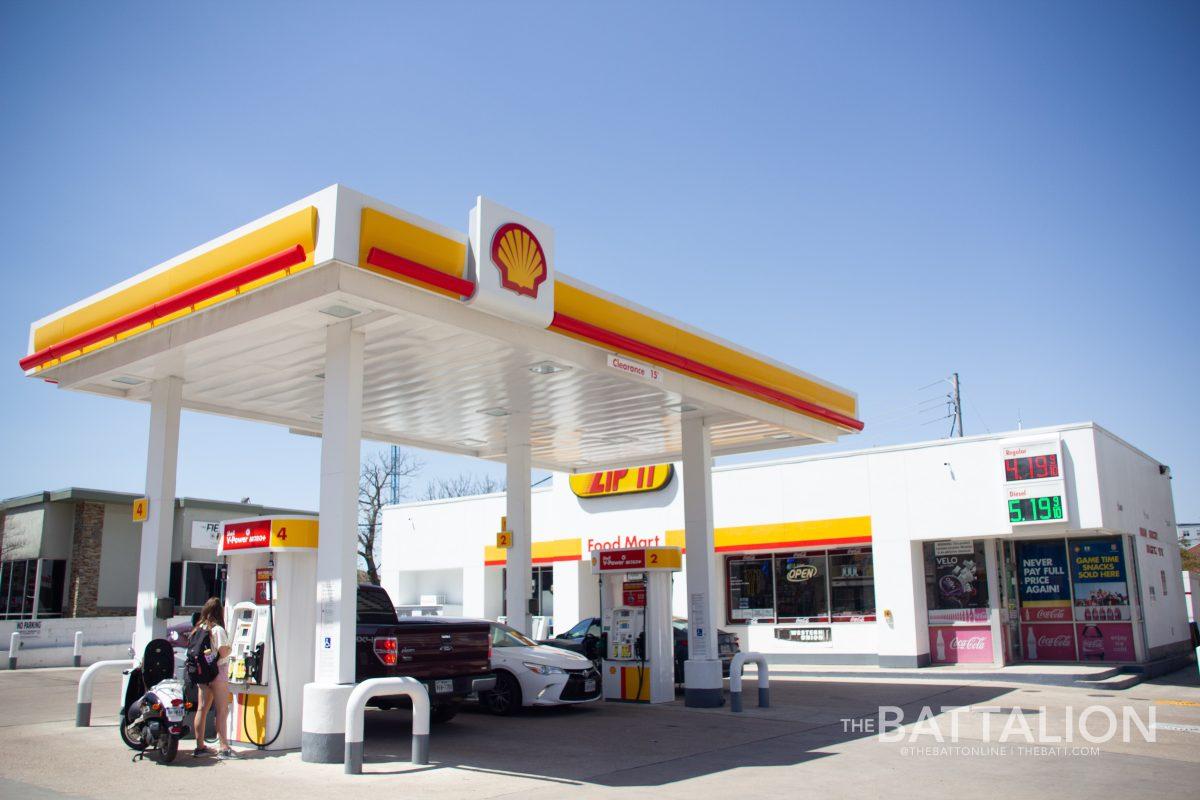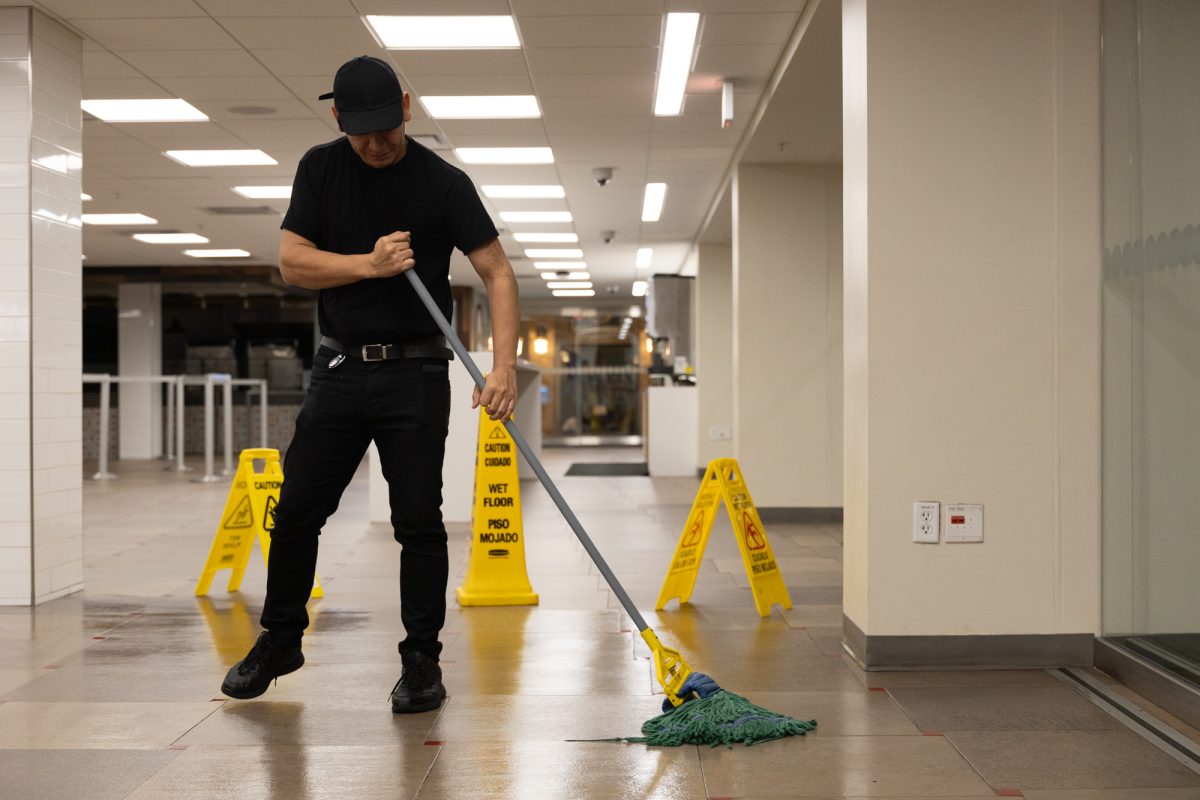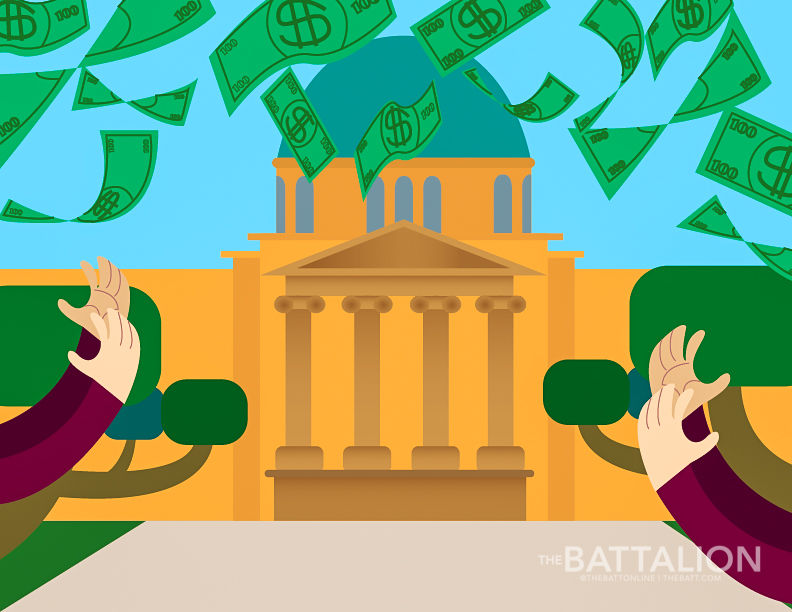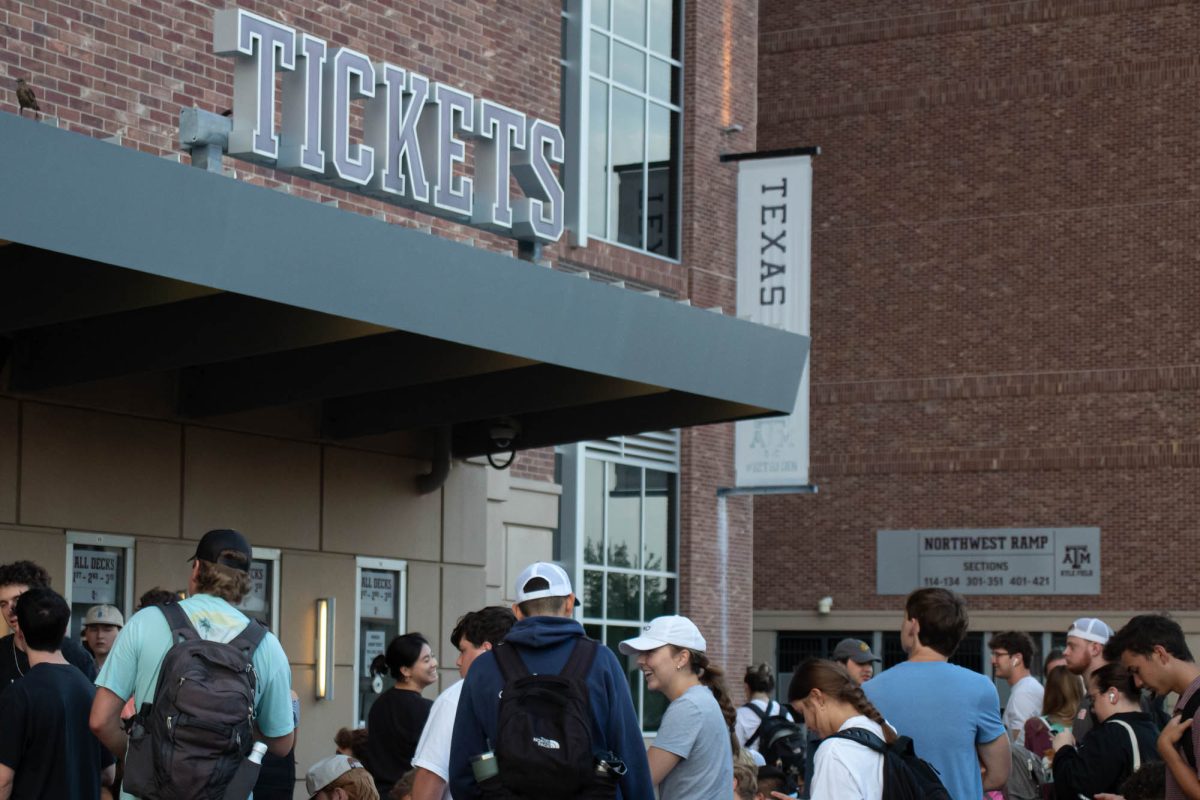The pain at the pump can be felt all across the country, with the highest gas prices reported on March 11, averaging $4.33 for regular unleaded gas nationwide.
During the last month, gas prices have broken records across the country amid the nation’s inflation rates and the Russia-Ukraine war. As of March 26, the national average for fuel decreased by one cent to $4.24 compared to last week’s average. States like California lead an all-time high of $5.91, while Texas remained on the lower end of the spectrum with prices averaging $3.87 per gallon. Associate professor of economics Fernando Luco said in an email to The Battalion gas prices are varying from state to state due to local state taxes as well as shipping costs.
“The further away you are from a refinery, shipping costs will hit you harder, and shipping is getting more expensive as well,” Luco said. Although many blame the increase in gas prices on the war occuring overseas, Luco said this is not entirely the case, as prices were increasing before the Russia-Ukraine war.
“Quantifying the impact on the U.S. economy is far from trivial, and it also depends on a number of factors that have to be taken into account,” Luco said. “Oil prices were increasing before the war started. The war added to the increase.”
According to AAA, Texas is one of the few states in the nation with gradually declining fuel prices. In order for the cost to reduce further, the intensity of the war must decrease and the supply of oil from other sources must increase, Luco said in the email.
“[Prices] will continue to fluctuate as news hits the markets and impact expectations, but absent increases in supply, it is difficult to think that specific, discrete events such as specific releases from the Strategic Petroleum Reserve will have a significant and lasting effect on local prices,” Luco said.
Bryan-College Station’s highest price average for fuel still remains $4.01, dating back to the 2008 oil crisis, according to AAA. When asked to compare the present price with the 2008 gas price increase, Luco said the overall context is quite different. In the early 2000s, prices increased for a long time before the economic crisis of 2008, the demand for oil collapsed and the prices soared even further, Luco said.
“Today, the situation is different. Though, demand is increasing and will increase as we get further away from pandemic-related demand reductions and closer to the summer,” Luco said. “Price increases are mostly driven by supply-side effects related to the war and its impact on expectations.”
As of March 26, the local average for Bryan-College Station is $3.94 for regular unleaded gas. With the increase in national fuel prices, many around the country have taken to public transportation. However, Texas A&M’s Transportation Services have not seen an increase in ridership, rather a decrease, Justin Tippy, a transit manager for Transportation Services, said in an email to The Battalion.
“Since the beginning of February, our weekly ridership dropped from 156,861 on the week of Feb. 6 to 131,667 on the week of March 6. This amounts to a 16% decrease over the past month, and this decrease is in line with typical ridership trends each semester,” Tippy said. “But we are equipped to run more buses if that is needed.”
When asked about how the current gas situation is affecting the fuel budget, Kennenth Kimball, director of finance and administration for Transportation Services, said in an email to The Battalion that they have budgeted approximately 25% more for fuel for the upcoming fiscal year to adjust to increasing prices.
“Reserve funds are also available should this increase prove to be inadequate. A long-term increase in fuel cost could necessitate additional allocations from student fees or an adjustment to transit service,” Kimball said.
For students who are struggling financially at this time, Transportation Services offer a wide range of resources to accommodate those needs. Bicycle services such as Veoride and the Bicycle Lease program in which students can lease a bike for a semester, vehicle renting service through Zipcar and ridesharing can all facilitate those needs, Byron Prestridge said, a sustainable transportation manager for Transportation Services.
“Our Sustainable Transportation office provides several affordable mobility options as well as partner programs available to students, faculty and staff ranging from on-campus micro mobility to cross-state shuttle and rideshare services,” Prestridge said.
If students are looking for mobility options offered by A&M, they can visit the Transportation Services website for more information.









